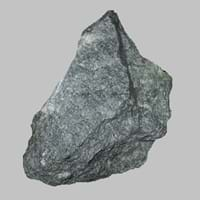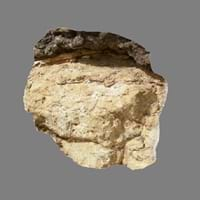Definition
It is a metamorphic magnesium rich rock because it is composed of the mineral talc
Laterite rock is a type of Sedimentary rock which is rich in iron and aluminium, formed in hot and wet tropical areas
Discoverer
Unknown
Francis Buchanan-Hamilton
Etymology
From 17th century, because of its greasy feel and use like a soap
From Latin later brick, tile + -ite1
Class
Metamorphic Rocks
Sedimentary Rocks
Sub-Class
Durable Rock, Soft Rock
Durable Rock, Soft Rock
Group
Not Applicable
Not Applicable
Other Categories
Fine Grained Rock, Opaque Rock
Fine Grained Rock, Opaque Rock
Texture
Polished
Earthy, Massive, Porphyritic
Color
Black, Black to Grey, Green, Grey
Brown, Buff, Red
Durability
Durable
Durable
Appearance
Dull, Banded and Foilated
Rough and Banded
Interior Uses
Bathrooms, Decorative Aggregates, Homes, Interior Decoration
Decorative Aggregates, Flooring, Interior Decoration
Exterior Uses
As Facing Stone, Garden Decoration
As Building Stone, As Facing Stone, Garden Decoration
Other Architectural Uses
Curbing
Curbing
Construction Industry
Manufacture of Magnesium and Dolomite Refractories
Cobblestones, for Road Aggregate, Landscaping, Roadstone
Medical Industry
Taken as a Supplement for Calcium or Magnesium
Not Yet Used
Antiquity Uses
Artifacts, Jewellery, Monuments, Sculpture
Artifacts, Monuments, Sculpture
Commercial Uses
Cemetery Markers, Creating Artwork, Gemstone, Jewelry, Manufacture of Soap, Solvents, Dyes, Plastics and Fibres, Production of Lime, Source of Magnesia (MgO)
An Oil and Gas Reservoir, Source of bauxite, Used in aquariums
Types
Not Available
Not Available
Features
Host Rock for Lead
Is one of the oldest rock, Very fine grained rock
Archaeological Significance
Famous Monuments
Christ the Redeemer in Rio de Janeiro, Stonehenge in English county of Wiltshire
Data Not Available
Famous Sculptures
Data Not Available
Data Not Available
Formation
Soapstone is a talc-schist, which is a type of metamorphic rock and it is largely composed of the mineral talc and is thus rich inmagnesium.
Laterite is a type of sedimentary rock which is generally a reddish weathering product of basalt.
Mineral Content
Albite, Apatite, Biotite, Calcite, Carbonate, Clay Minerals, Hornblende, Ilmenite, Micas, Plagioclase, Pyroxene, Quartz
Aluminum Oxides, Biotite, Hematite, Hornblade, Iron Oxides, Manganese Oxides, Micas, Muscovite or Illite, Plagioclase, Pyroxene
Compound Content
CaO, Mg, MgO
Aluminium Oxide, CaO, Iron(III) Oxide, FeO, Potassium Oxide, MgO, MnO, Sodium Oxide, Phosphorus Pentoxide, Silicon Dioxide, Titanium Dioxide
Types of Metamorphism
Burial Metamorphism, Cataclastic Metamorphism, Contact Metamorphism, Hydrothermal Metamorphism, Impact Metamorphism, Regional Metamorphism
Not Applicable
Types of Weathering
Not Applicable
Biological Weathering, Chemical Weathering
Types of Erosion
Not Applicable
Chemical Erosion, Water Erosion, Wind Erosion
Grain Size
Fine Grained
Fine Grained
Fracture
Conchoidal
Conchoidal
Porosity
Less Porous
Highly Porous
Compressive Strength
Not Available
Cleavage
Perfect
Not Applicable
Toughness
1
Not Available
Specific Gravity
2.86
Not Available
Transparency
Opaque
Opaque
Density
2.8-2.9 g/cm3
Not Available
Specific Heat Capacity
Not Available
Resistance
Heat Resistant, Pressure Resistant
Heat Resistant, Pressure Resistant
Deposits in Eastern Continents
Asia
China, India, Indonesia, Japan, North Korea, Russia, Saudi Arabia, Singapore, South Korea, Sri Lanka, Tajikistan, Thailand
India
Africa
Egypt, Ethiopia, Ghana, South Africa, Western Africa
East Africa, Western Africa
Europe
Austria, England, Finland, France, Germany, Greece, Spain, Sweden, Switzerland, United Kingdom
England, Romania, Scotland
Others
Not Yet Found
Not Yet Found
Deposits in Western Continents
North America
Canada, USA
Canada, USA
South America
Colombia
Not Yet Found
Deposits in Oceania Continent
Australia
Central Australia, New Zealand, Queensland
Central Australia, Western Australia
All about Soapstone and Laterite Properties
Know all about Soapstone and Laterite properties here. All properties of rocks are important as they define the type of rock and its application. Soapstone belongs to Metamorphic Rocks while Laterite belongs to Sedimentary Rocks.Texture of Soapstone is Polished whereas that of Laterite is Earthy, Massive, Porphyritic. Soapstone appears Dull, Banded and Foilated and Laterite appears Rough and Banded. The luster of Soapstone is greasy while that of Laterite is dull. Soapstone is available in black, black to grey, green, grey colors whereas Laterite is available in brown, buff, red colors. The commercial uses of Soapstone are cemetery markers, creating artwork, gemstone, jewelry, manufacture of soap, solvents, dyes, plastics and fibres, production of lime, source of magnesia (mgo) and that of Laterite are an oil and gas reservoir, source of bauxite, used in aquariums.










